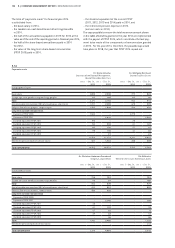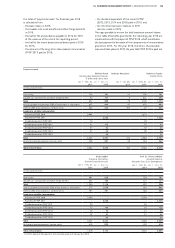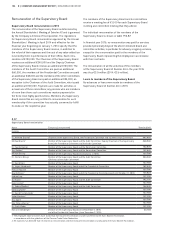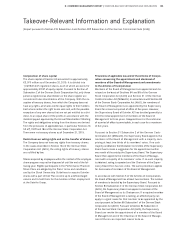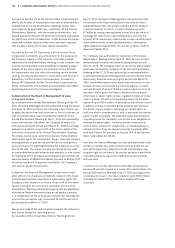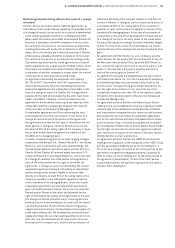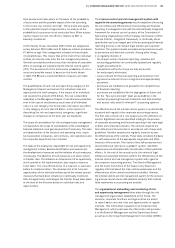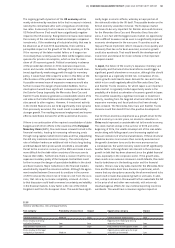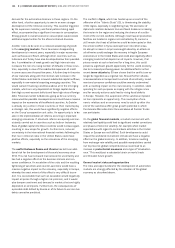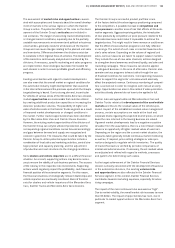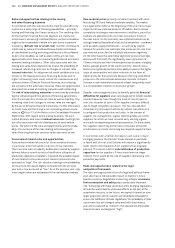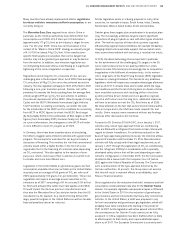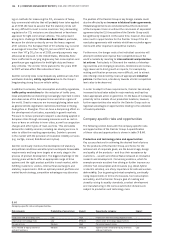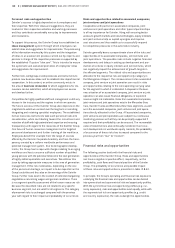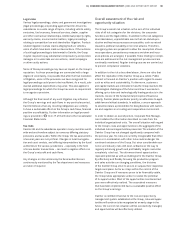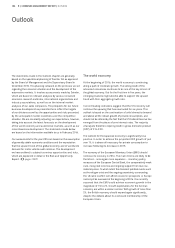Mercedes 2015 Annual Report Download - page 135
Download and view the complete annual report
Please find page 135 of the 2015 Mercedes annual report below. You can navigate through the pages in the report by either clicking on the pages listed below, or by using the keyword search tool below to find specific information within the annual report.142 B | COMBINED MANAGEMENT REPORT | RISK AND OPPORTUNITY REPORT
demand for the automotive divisions in these regions. On the
other hand, a further opportunity is seen in an even stronger
development of the Chinese economy. This could be triggered
by the expansive monetary and fiscal policies taking rapid
effect, accompanied by a significant increase in consumption.
Strong growth in overall economic consumption would create
additional opportunities for the aforementioned divisions.
Another risk is to be seen in a renewed weakening of growth
in the emerging markets. There have been disappointing
developments in recent years, especially in major economies
such as Russia and Brazil, although other countries such as
Indonesia and Turkey have also developed below their possibili-
ties. A combination of weak growth and high interest-rates
increases the risk of a rising number of defaults in those coun-
tries, especially in view of the substantial expansion of credit
in some cases over the past few years. A further drop in the price
of raw materials along with the interest-rate increase in the
United States could lead to renewed substantial capital outflows,
especially in raw-material exporting emerging countries. This
would worsen financing conditions above all in the emerging
markets, which are very dependent on foreign capital due to
their high current-account deficits and have high rates of foreign
debt. Financial-market turbulences going as far as currency
crises would be possible consequences and could have a massive
impact on the economies of the affected countries. As Daimler
is already very active in these countries or their markets play
a strategic role, this would have significantly negative effects
on the Group’s prospective unit sales. An opportunity is to be
seen in the implementation of reforms occurring in important
emerging economies. If structural reforms are quickly and con-
sistently carried out in countries such as India or Indonesia,
flows of global capital into these countries would increase again,
resulting in new scope for growth. Furthermore, reduced
uncertainty in the international financial markets following the
first rise in interest rates in the United States could have
positive effects, especially on the economies of the emerging
markets.
The conflict between Russia and Ukraine has led to an addi-
tional risk for the development of the world economy since
2014. This risk has increased macroeconomic uncertainty and
has had a negative effect on the business climate and con-
sumer confidence. An escalation of the crisis and the resulting
tightening of sanctions and counter-sanctions would have a
massive negative impact on the economy, especially in Europe,
whereby the exact extent of this effect is very difficult to pre-
dict. It is conceivable that such an escalation would negatively
impact oil prices through a higher risk premium, and it would
also dampen sentiment and demand in markets that are highly
dependent on oil imports. Furthermore, the consequences of
a possible debt default by Russia or of its failure to service due
debts cannot be predicted.
The conflict in Syria, which has heated up as a result of the
offensive of the “Islamic State” (IS), is threatening the stability
of the region, especially in neighboring Iraq. The severance of
diplomatic relations between Iran and Saudi Arabia is increasing
the tension in the region and reducing the chance of a settle-
ment of the current conflicts. Although most Iraqi oil production
facilities are located in regions not controlled by IS, concerns
still remain that Iraqi oil deliveries could be interrupted or that
the armed conflict in Syria could spill over into other areas.
An abrupt increase in oil prices brought about by an attack on
oil refineries could endanger the recovery in fragile European
economies or in the United States and could also negatively affect
emerging markets that depend on oil imports. However, if oil
prices remain at such a low level for a long time, this could
present a significant growth opportunity for the world economy
due to increased purchasing power. An additional factor is that
recent terror attacks by IS have shown that the conflict can no
longer be regarded as a regional risk. Should further attacks
or assassinations in Europe lead to a shock of uncertainty, invest-
ment and consumer confidence could be severely undermined
with a resulting impact on the real economy. In addition, state
spending for such purposes as coping with the refugee crisis
and for security actions could lead to rising fiscal deficits
in Europe. However, the suspension of the sanctions imposed
on Iran represents an opportunity. The resumption of eco-
nomic relations and an enormous need to catch up after the
end of the sanctions offer great growth potential in which
the divisions Mercedes-Benz Cars and above all Daimler Trucks
can participate.
On the global financial markets, a market environment with
relatively low liquidity could lead to significant market corrections
and phases of extreme volatility, for example when market
expectations with regard to central bank activities in the United
States or Europe are not fulfilled. Such developments could
impact the worldwide investment climate and have a negative
effect on the global economy. In addition, tensions resulting
from exchange-rate volatility and possible manipulations carried
out to preserve global competitiveness could lead to an
increase in protectionist measures and a type of “devaluation
race.” This would put a substantial strain on world trade
and threaten future growth.
General market risks and opportunities
The risks and opportunities for the development of automotive
markets are strongly affected by the situation of the global
economy as described above.


